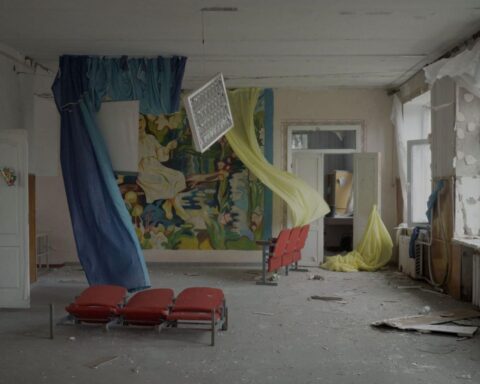Havarie
(Germany, 93 min.)
Dir. Philip Scheffner
Philip Scheffner’s Havarie is an exploded view: a doc and an experiment. A three-minute found-YouTube-video stretched to feature length, displaying each of its approximately 5,400 frames as a discrete object in a sequential relation would be enough to make it an interesting experiment. This piece extends much further, tracing a complex network of political, geographic and affective relations, all orbiting around a visible gravitational centre: a tiny boat jammed full of refugees attempting passage to Europe.
For the first while, the image remains relatively static (though the most minute change from frame to frame is visible), as the soundtrack becomes populated with various voices: an Algerian woman now living in France speaks about the decade it took her to get there by legitimate means, her separation from her husband who was deported back to Algeria, and her own imminent deportation; a Ukrainian cargo ship captain reports a few stowaways and speaks about his separation from his family and about political tensions among the transnational crew; North African migrants speak about the desire for Europe, the things that they are fleeing from and their repeated attempts at passage.
The fact that our protagonists on screen are visible means, of course, that they’ve been seen, but by whom we don’t know, until the boat slowly drifts out of frame and some stunning vertical shafts of violet and green light appear (artifacts of the low-quality digital video capture), announcing the arrival in the frame of an enormous and almost vertigo-inducing white mass—a cruise ship, with a balcony full of onlookers. The reveal is incredibly forceful on account of the extreme, near-geologic temporality in which the spectator has been placed, the movement of the image like a tectonic shift after the relative stability of the first section of the film, and it is reflected in the soundtrack, which now comments directly on the image itself. Through interviews with the videographer, the cruise ship captain, even some of the refugees who were on the boat—as well as, amazingly, an audio recording of communications between the cruise ship and, presumably, Spanish border control regarding the spotting of the boat (providing the film a dimension of narrative suspense)—the image becomes increasingly problematized as it becomes part of an ever-more complex and open web of relations.
Havarie belongs within a broadly defined notion of the essay film genre, and also exhibits a true experimentalism, all while never compromising documentary integrity. Formally it is a unique and successful feat, and as a work in the ever-growing corpus of documentary films and other art works dealing with contemporary Afro-European migration it stands out as being worthy of a close look.











